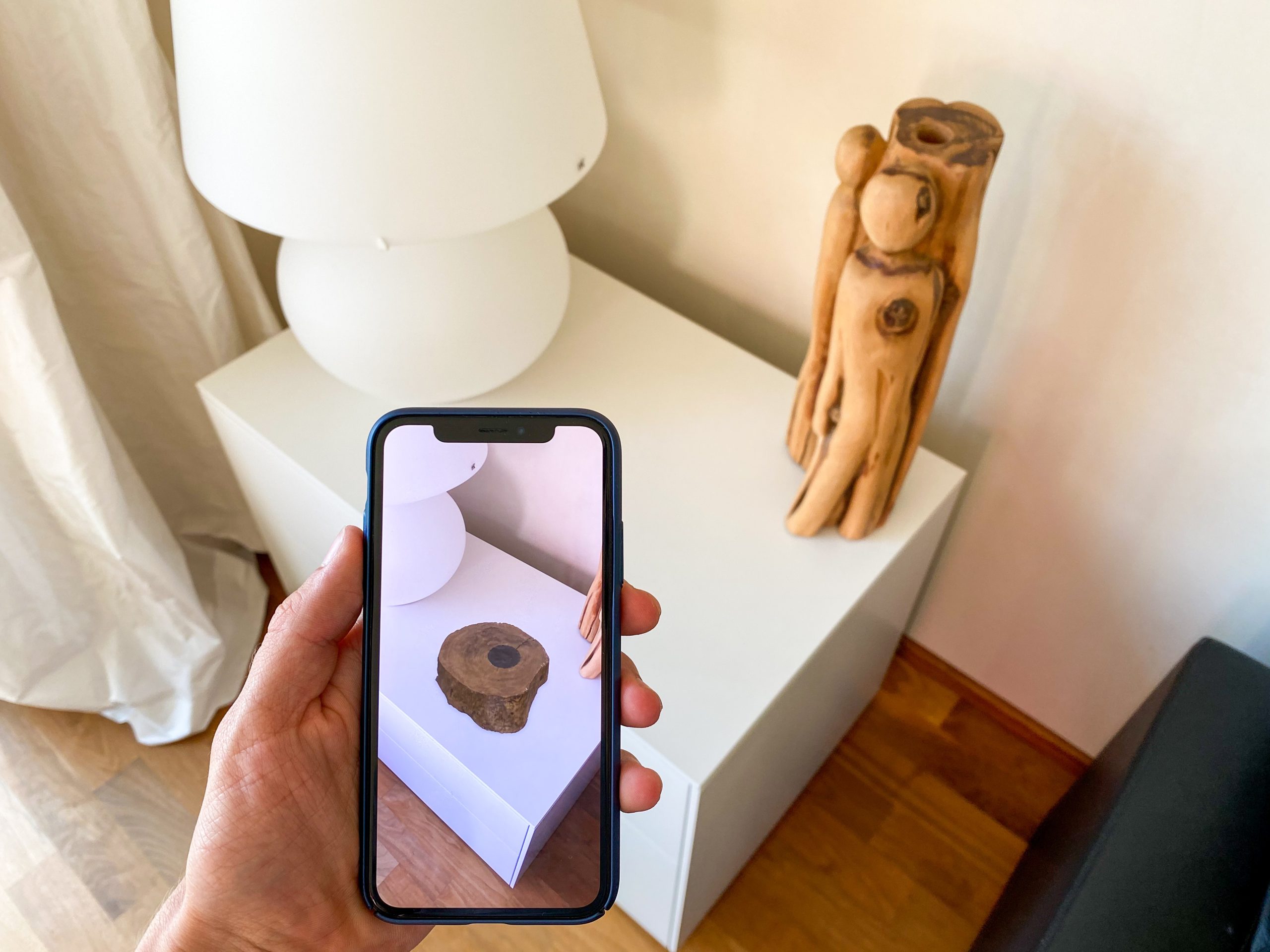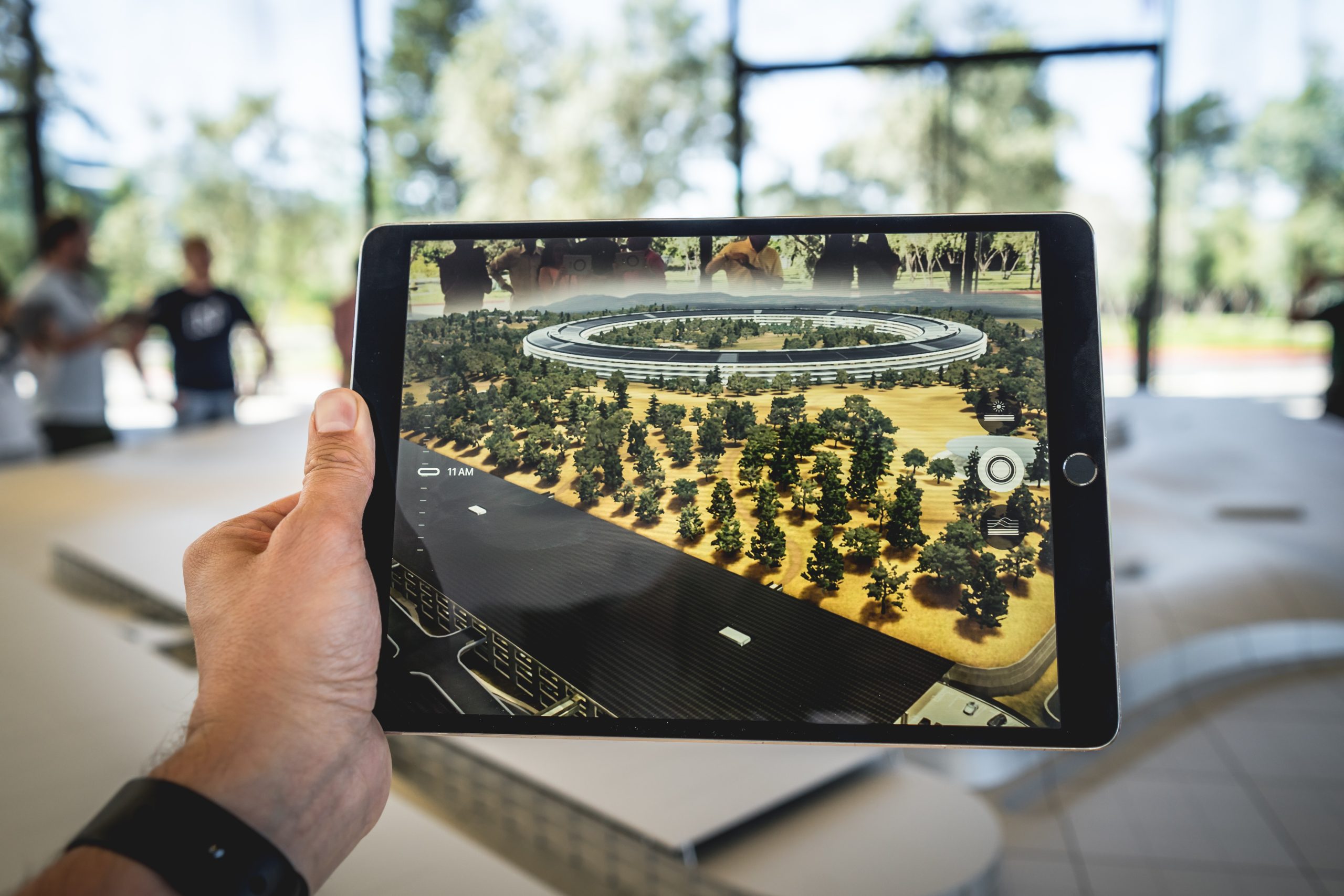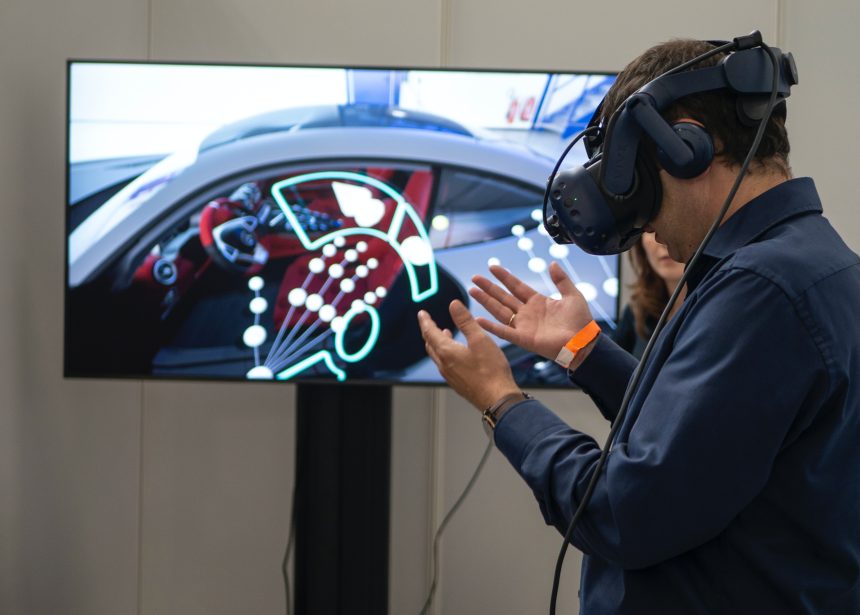Have you ever wanted to bring your wildest dreams to life? Well, now you can with the power of augmented reality (AR) apps. Augmented reality has become a buzzword in recent years, captivating users with its ability to overlay digital content onto the real world. Just imagine being able to see fantastical creatures right in front of you or virtually decorating your home before making any changes. In this article, we will delve into the fascinating world of AR app development and show you how you can create your own immersive experiences that will leave people wondering if magic truly exists.
What is Augmented Reality?
Augmented Reality (AR) is a technology that offers a blend of the real world with computer-generated elements, enhancing our perception and interaction with reality. Unlike Virtual Reality (VR), which completely immerses users into a digital environment, AR overlays virtual objects onto the real world in real-time. This ability to seamlessly integrate virtual content within our physical surroundings opens up exciting possibilities across various industries.
In recent years, AR has gained popularity in fields such as gaming, advertising, education, and navigation. It allows gamers to bring their favorite characters or game objects into the real world and interact with them through mobile devices or dedicated headsets. In advertising, AR enables companies to engage customers in interactive experiences by projecting virtual product demonstrations or allowing them to virtually try on clothes before purchasing online. In education, AR provides an immersive learning experience by superimposing educational content onto textbooks or enabling students to explore historical sites from their classrooms. Additionally, AR-powered navigation apps help users navigate unfamiliar locations by overlaying directions onto the live camera feed of their smartphones.
Overall, Augmented Reality has the potential to revolutionize how we perceive and interact with our surroundings. As this technology continues to evolve and become more accessible, its applications will undoubtedly expand even further beyond what we can currently imagine – opening up new opportunities for innovation across industries.

Understanding the Basics of AR Technology
One of the key elements in making an augmented reality (AR) app is understanding the basics of AR technology. Augmented reality refers to the integration of digital information, such as images, videos, or 3D models, into a real-world environment. This technology overlays virtual elements onto the physical world and allows users to interact with them in real time.
To create an AR app, developers need to have a deep understanding of computer vision and image recognition technologies. Computer vision algorithms enable the app to identify objects or features in the user’s surroundings and track their movements accurately. Image recognition techniques play a crucial role in identifying specific markers or patterns that trigger virtual content within the application.
Another important aspect to consider is spatial mapping, which involves mapping out physical spaces and objects using sensors on mobile devices. This process enables AR apps to understand their surroundings more comprehensively and precisely place digital content within them. Spatial mapping also helps with occlusion detection, where virtual objects appear hidden behind real ones for a more immersive experience.
In summary, building an augmented reality app requires knowledge of fundamental aspects such as computer vision, image recognition technologies, and spatial mapping. Understanding these basics lays a solid foundation for creating engaging and interactive AR experiences for users. With this knowledge in hand, developers can unlock new possibilities for blending digital content seamlessly into our physical world through innovative applications.
Choosing the Right Platform for Development
Choosing the right platform for development is a crucial step in creating an augmented reality app. With so many options available, it can be overwhelming to make a decision. One important factor to consider is the target audience of your app. Are you primarily targeting iOS users or Android users? This will determine whether you should develop your app on platforms like ARKit for iOS or ARCore for Android.
Another key consideration is the level of expertise required to develop on a particular platform. If you have a team of experienced developers who are familiar with a certain platform, it may be best to stick with that platform rather than trying something completely new. Additionally, take into account the resources available for each platform, such as documentation and support from the developer community.
Lastly, think about scalability and future-proofing your app. Some platforms may have limitations when it comes to expanding functionality or integrating with other technologies in the future. It’s essential to choose a platform that not only meets your current needs but also has room for growth and flexibility down the line. By carefully evaluating these factors, you can select the right platform that aligns with your goals and maximizes your chances of success in developing an engaging augmented reality app.

Designing and Developing AR Content
Augmented reality (AR) is revolutionizing the way we experience digital content. Whether it’s overlaying virtual objects onto the real world or enhancing our surroundings with interactive elements, AR has endless potential for creativity and engagement. But designing and developing AR content requires a different approach than traditional app development.
First, it’s crucial to understand the user’s environment and how the digital content will interact with it. Designers must consider factors such as lighting conditions, object recognition capabilities, and spatial mapping accuracy to ensure a seamless AR experience. This involves testing the app in various real-world scenarios to identify any limitations or challenges that may arise.
Next, developers need to choose the right tools and platforms for building AR content. There are many options available, from specialized software like Unity or Unreal Engine to more accessible frameworks like Apple’s ARKit or Google’s ARCore. The choice will depend on the desired level of complexity, platform compatibility, and available resources.
Lastly, collaboration between designers and developers is key for creating impactful AR experiences. Designers must communicate their vision effectively so that developers can bring it to life through code. Likewise, developers should provide technical insights to help enhance the design process and optimize performance.
In conclusion, designing and developing AR content requires a multidisciplinary approach that combines creativity with technical expertise. By understanding user environments, choosing the right tools, and fostering collaboration between designers and developers, creators can unlock the full potential of augmented reality technology in their apps.
Integrating Features and Functionality into the App
Integrating features and functionality into an app is a crucial step in creating a successful augmented reality (AR) experience. One of the key aspects to consider is how well the AR features blend with the existing functionalities of the app. Seamless integration is essential for providing users with a smooth and intuitive experience. For example, if you’re developing an AR shopping app, you should ensure that users can easily navigate between browsing items in AR and making purchases.
Another important consideration when integrating features into your AR app is scalability. As technology evolves and new trends emerge, it’s essential to future-proof your app by ensuring it can adapt to changes seamlessly. This can involve building modular components that can be easily updated or replaced as needed. By staying ahead of technological advancements, you can position your app to remain relevant in a fast-paced market.
Lastly, user feedback should guide your decision-making process when integrating features into your AR app. Pay attention to what users appreciate about your current functionalities and seek their input on potential additions. This not only ensures that you are tailoring the user experience but also strengthens brand loyalty by showing customers that their opinions matter.
Integrating features and functionalities into an augmented reality app requires thoughtful planning and considerations beyond just adding novelty effects or functionalities for the sake of it. Striving for seamless integration, scalability, and incorporating user feedback will help you create an engaging and robust AR experience that stands out from competitors in this rapidly evolving field.

Testing and Launching Your AR App
Once you have developed your augmented reality (AR) app, testing and launching it can be a crucial step in ensuring its success. Testing is essential to identify and fix any bugs or glitches that may hinder user experience. It’s important to thoroughly test your AR app on different devices and operating systems to ensure compatibility and smooth functionality.
When testing your AR app, don’t forget to consider how it performs in different environments and lighting conditions. This will help you assess the accuracy of the app’s tracking capabilities and if it aligns properly with real-world objects. Moreover, gathering feedback from beta testers can provide valuable insights into how users interact with the app in real-world scenarios. Listening to their suggestions and concerns can help you refine your AR app further before launching it.
Launching an AR app requires careful planning and strategic marketing efforts. Consider creating a buzz around your launch by sharing sneak peeks or teasers on social media platforms or through newsletters targeted at potential users. Additionally, collaborating with influencers or industry experts who can vouch for your product can help amplify its visibility and generate excitement.
Remember that testing is an ongoing process even after launch, as updates, bug fixes, and new features will need continual evaluation. By prioritizing thorough testing during development stages, actively engaging beta testers for feedback, and executing a well-planned launch strategy, you’ll increase the chances of success for your AR app in today’s competitive market.
Conclusion: Bringing Your Ideas to Life.
In conclusion, bringing your ideas to life in the form of an augmented reality app requires dedication, creativity, and a hefty dose of technical know-how. It is not enough to simply have a great idea; you must be willing to put in the time and effort to bring it into existence. This process may involve conducting market research, understanding user needs and preferences, and working closely with developers and designers.
One important aspect to keep in mind is the need for constant iteration and improvement. Developing an augmented reality app is an ongoing journey rather than a one-time task. You will likely encounter roadblocks along the way but don’t let them discourage you. Embrace these challenges as opportunities for growth and learning.
Lastly, remember that success is not guaranteed overnight. Building a successful augmented reality app takes persistence and patience. Keep refining your ideas, listening to feedback from users, and adapting accordingly. With perseverance and determination, you can bring your vision to life and create a truly remarkable augmented reality experience for your target audience. So go ahead, take that first step towards making your idea into reality!







